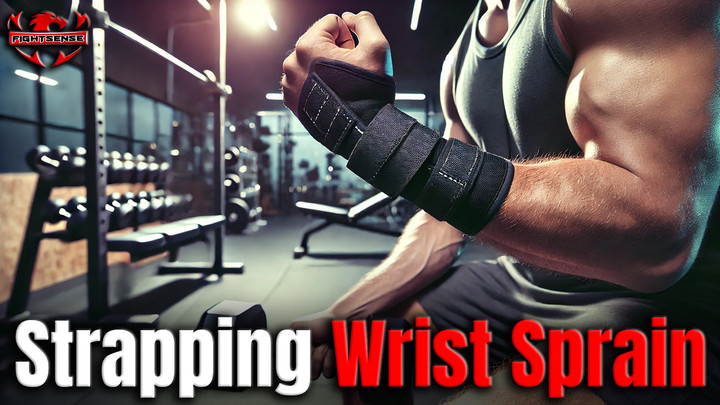Strapping Wrist Sprain: A Comprehensive Guide for Recovery
14th Mar 2025
Common injuries from accidental falls, overuse, or rapid motions are wrist sprains. Usually producing discomfort, edema, and restricted movement, it entails straining or ripping the ligaments surrounding the wrist. One often used technique to stabilize an injured wrist and support healing is strapping wrist sprain. This article will look at how, when needed, strapping may help a sprained wrist and the best methods for properly administering wrist strapping.
Keynotes:
-
Stabilizing wrist sprain helps to lower pain.
-
Strapping wrist sprains helps avoid re-injury in healing.
-
To prevent limiting circulation, always make sure the strap is firm but not too firm.
-
See a medical practitioner for serious sprains before strapping.
-
The correct strapping method helps to increase functioning throughout the healing phase.
What is a wrist strap?
Wrist strapping is the technique of supporting and restricting mobility by wrapping elastic bandages or specially designed straps around an injured wrist. This lessens the tension on the ligaments, therefore encouraging healing and avoiding further damage. When dealing with a wrist sprain, the main objective is to stabilize the affected region to prevent further injury and to start the healing process.
Should you strap a sprained wrist?
"Should you strap a sprained wrist?" is one of the most often asked queries individuals have about their injuries. The degree of the sprain determines the response mostly. Strapping wrist sprain might provide much-needed support and comfort for minor to severe sprains. The strapping lets the ligaments have time to recover correctly and helps reduce unwanted motions that can aggravate the damage.
More serious instances need urgent medical treatment before beginning any strapping. A medical practitioner could advise further therapies or more sophisticated forms of immobilization. Still, strapping may be a useful component of the healing regimen for most damaged wrists.
How may strapping help with a sprained wrist?
1. Joint Stabilization
Wrist sprain strapping serves mainly to restrict mobility and stabilize the joint. Straps or bandages serve to secure the wrist, therefore shielding the ligaments from further pressure and tension and accelerating the healing process.
2. Relief from Pain
A sensation of compression from strapping may assist in lowering discomfort and edema. Faster recuperation may result from better blood circulation made possible by this compression.
3. Guard Against Re-injury
The damaged region is less prone to move excessively after the wrist is strapped, therefore lowering the chance of re-injury. By providing time for the ligaments to recover correctly, strapping helps guarantee that the wrist does not return to demanding activities too quickly.
4. Enhanced Features
Wearing a wrist strap helps people to do little chores without hurting their wrist. With the help, the mending tissues are not damaged, and a slow return to movement may be made possible.
When should one use strapping for a wrist sprain?
Effective healing depends on strapping wrist sprain time being just perfect. After an accident, wrist strapping applied immediately may assist in reducing swelling and stopping pointless movement. Still, it's crucial to remember that strapping shouldn't be too tight as it could block blood flow. The strapping ought to be comfy but not too so.
Wearing the strap for a few days could be sufficient for small sprains. Wearing it for extended times or under medical supervision may be required for more serious sprains to guarantee correct recovery.
Methods for Wrist Sprain Strapping
One may effectively strap an injured wrist in numerous ways. The main strategies are:
1. Elastic Bandage
One of the most often used elastic bandages for strapping a damaged wrist is Start by bandaging the wrist so that it offers adequate compression without compromising blood flow. For best stability, be sure the bandage is tightened around the wrist and at the palm.
2. Kinesiology Tapes
Support may be given using kinesiology tape, which lets some movement free. This kind of tape is designed to replicate the suppleness of the skin, thereby offering support and flexibility throughout the healing process.
3. Wrist Straps for Business
Commercial wrist straps are accessible for individuals who value convenience, as they provide constant support and simple application. These straps are designed to wrap around the wrist and compress, therefore guaranteeing appropriate stability throughout the healing process.
Shop Now!
Should You Strap a Sprained Wrist? Last Thoughts
One tried technique for lowering discomfort and accelerating healing is strapping wrist sprains. Still, one should keep in mind that correct application is quite vital. Whether you use a commercial wrist strap, kinesiology tape, or an elastic bandage, be sure the strap is positioned appropriately to provide enough support without compromising circulation. See a healthcare provider for further advice if you are unclear about how to apply wrist strapping or if the discomfort continues.
Disclaimer:
Always see a doctor before trying self-treatment for an injured wrist. Good healing depends on accurate diagnosis and treatment.

